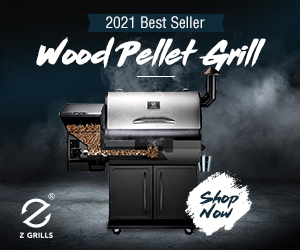I’ve spoken a lot in the past about load development, but never went into details on why or the inherent benefit of development. There are some caveats associated with load development and a significant amount of trial and error. However, by the end there’s a quality precision round that arguably is hard to beat.
For the seasoned reloader, this becomes second nature. Someone who has been reloading and shooting for decades understands the eloquence that comes from making the perfect round and consistently producing the perfect shot. These individuals spend a significant amount of time and material cost on finding what works best for that one specific rifle. What works well for one rifle in one caliber, may not work well in another.
Considerations for Load Development:
Out of the box rifles, especially new productions often have universal specifications. I.e. within tolerances. There may be some rounding errors that would make one barrel have lands and grooves a thousandth or two wider than another barrel. This is even true of the same manufacturer. Tooling wear, consistency changes, and machining travel all impact the final product over time.
However, when we look back at older manufacturers or wartime firearms, the amount of variation can swing. Let’s take a look at the lowly M1 Carbine. Wartime production was split between 10 various manufacturers, all with varying degrees of quality. We see on the secondary market that some command higher sales numbers than others. For example, a Saginaw fetches much higher values than a Plainfield. Are the guns different? Well, on paper, not really. But in the hand, there’s a vast difference. This increases as new production models hit the market.
Appropriating that idea, other countries may not experience the same demand for quality as the U.S. government did. It’s well known that Japanese rifles suffered a severe drop in overall quality late in the war. Japan even produced a ‘last ditch’ variation which omitted most of the features and finishes. It’s these constant changes that also affected accuracy.

Not every manual has every powder or projectile combination. Use a mixture or settle on a projectile and powder combination listed.
These changes aren’t limited to just military rifles. Chrome lined barrels v nitride barrels also have different dimensions and stainless barrels can’t withstand the same type of fast firing as the latter two.
Why Develop a New Load?
We’ve already spoken about the potential for changes depending on batch manufacturing and even the historical relevance that can dictate accuracy just in manufacturing. It understandable to say many people develop new loads just so the holes on paper can be closer together. That is just a fortunate coincidence for someone who looks at all the data.
Creating this mastery of the explosive arts also comes down to firearm life. You see, just like shoes one size may fit all, but it also may lead to bunions. In a similar sense, a firearm that is launching a projectile at a speed a bit too fast than optimal, can increase barrel wear. Likewise, in historical firearms bore diameter did change and potentially allow differences when a caliber was used for military and hunting purposes. 6.5 Carcano is a great example, as military rounds had a groove depth diameter of .268-inches and projectiles in modern loadings are a .264-inch diameter. Because of this difference, accuracy really is subjective.

Depending on the type of projectile used, you may or may not be able to use your preferred powder. For example, cast loads have completely different data powders than metal swaged projectiles.
A final reason I’ll discuss developing a load in this article, is the ability to have different ammunition for different purposes. Hunting rounds tend to have heavier bullets or a different type of projectile. Soft points and hollow points are very common in hunting rounds and carry more weight down range. FMJ projectiles are more commonly used for target practice. Loading the same powder weight for a soft point that you use in an FMJ can be disastrous via excessive pressure spikes. In older firearms the metal may be unable to hold up to the newer, higher pressures these factory or hunting loads may produce. This is the best time to consider customizing the ammunition you use.
What’s the First Step in the Process?
There is the right way and the dirty way. Most people implement the dirty way with modern firearms, and that’s alright! Material and steel development have come along the last 50 years. Let’s start by looking closely into the right way to develop a load.

There are many finishes on a projectile worth considering. If it’s not perfect, don’t risk it and put the questionable ones aside.
The first step is to slug the bore and potentially the chamber. Slugging can be done several ways, but there are two common methods. The first is taking a piece of round, soft lead and hammering it down the bore with a wooden rod or dowel. When it comes out the other end, you’ll be able to measure both the lands and the grooves of the barrel. This provides the most accurate information to start. The second method involves taking lead or wax and filling part of the barrel as well as the chamber. Once dried, it can be removed, and you’ll have an accurate measurement of both the chamber and the lands/grooves of the barrel.
Slugging has the inherent benefit of being a true imprint. There’s no guesswork. Additionally, it can verify the caliber it’s chambered for. Regrettably, with the low price of military surplus rifles after various wars, many people purchased these rifles and rechambered them for different calibers. What may have been sold as a 303 British may in fact be a 308 or 6.5 Swede!
The dirty way involves no slugs whatsoever. Tighter tolerances mean less variation and while Slugging is STILL recommended, it’s not always necessary.

Sometimes powders change. Companies like Midwest Powder manufacture close alternatives to popular powders but older stock of powder can be found in the right places.
Next Steps:
From here, it’s simple. A projective is always sized up about 1-2 thousandths over the bore diameter (the largest measurement taken from the slug). For FMJ, this is why you’ll see only .224 diameter projectiles when loading .223 caliber cartridges. It’s more critical when using soft point and cast projectiles. The goal is to have the case expand inside the chamber as little as possible. When the expansion is larger, because of a small bullet, gas can travel down the grooves of the barrel itself or around the grease groove of a lead projectile. When this happens to a lead; the base does not get formed to the barrel and can cause issues with gas blowby or misshapen bases and varying velocities.
Once the properly sized projectile is chosen, grab a reloading manual! Find the projectile weight and charge that’s closest to the one you will reload with. No book has every manufacturer, but there should be one very close. Find a powder that you like and start by reducing the load by nearly 10-20%. If it calls for 20 grains of powder start at 16 or 18. This is the starting point for a good ladder test.

You’ll need a lot of different burn rates to find what’s best. The author saves and catalogues all the powders used for various calibers. Vihta Vuori is obviously preferred.
Smaller Ladders are Safer:
A ladder test is a progressive addition to the powder charge and testing of the round to determine overall accuracy. Increasing the powder charge progressively by 0.1-0.5 grains is standard. To reduce time many users charge by a whole grain change to narrow down a moderate accuracy; then redo the process with the sets that were the most accurate. For example, they may produce 16.0, 17.0, 18.0, etc and see what appeared to be the most accurate. With some range time these rounds will tell you what the best load data is for that particular rifle.
Start with 10 rounds loaded to the lowest charge you are comfortable with. When dealing with fast burning powders or low velocities, use your better judgement so as to not end up with a squib stuck in the barrel. I am not responsible. Load up these 10 rounds and continue with another ten 0.1-0.5 grains more – or 1.0 depending on your preference. Keep it consistent. If you increase by 0.2 grain, do the same increase for every single set loaded. Never, ever, ever surpass the maximum loads in the reloading manuals. Doing that is a completely different article with lots of attorney oversight.
By the end you should have 10 sets of 10 rounds. If you started with 16.0 and increased by 0.2, the ladder should be loaded at 16.0, 16.2, 16.4, 16.6 grains, etc. Now, the real fun begins.

This is where you need to look into the pros and cons for your type of shooting. The type of material used. in manufacturing the projectile may require more or less powder to become accurate in your specific rifle.
On The Range:
Firing these rounds for the first time can be a bit of an adrenaline rush. Will it work? What is going to go wrong? Are the first rounds going to be the best? The answer is yes, maybe, and no.
Employing a large target with individual aiming points, I recommend firing 3 to 5 shots at 50-100 yard (rifle) for each load test and comparing the results. For each of these groups, measure the two most distant holes on the farthest edge. This is your group size. You can use this to calculate the MOA (minute of angle). Go through all the rounds and do it again to verify the results. Now the question is, are you happy with the results or do you want to refine it even more?
Don’t be surprised if the lower velocities end up being some of the most accurate ammunition you’ve fired. These tests aid in finding a round that works well for that gun and no other. Sharing reloaded ammunition or using some found reloads can be disastrous. Reloading is an art, and it comes together perfectly when performing a ladder test. You can prove to yourself that accuracy isn’t just lining the sights up and squeezing the trigger, but refining each aspect you have control over. There’s no longer an excuse “my gun doesn’t like this ammunition.” Instead, find the food it loves best and makes that firearm fat.







